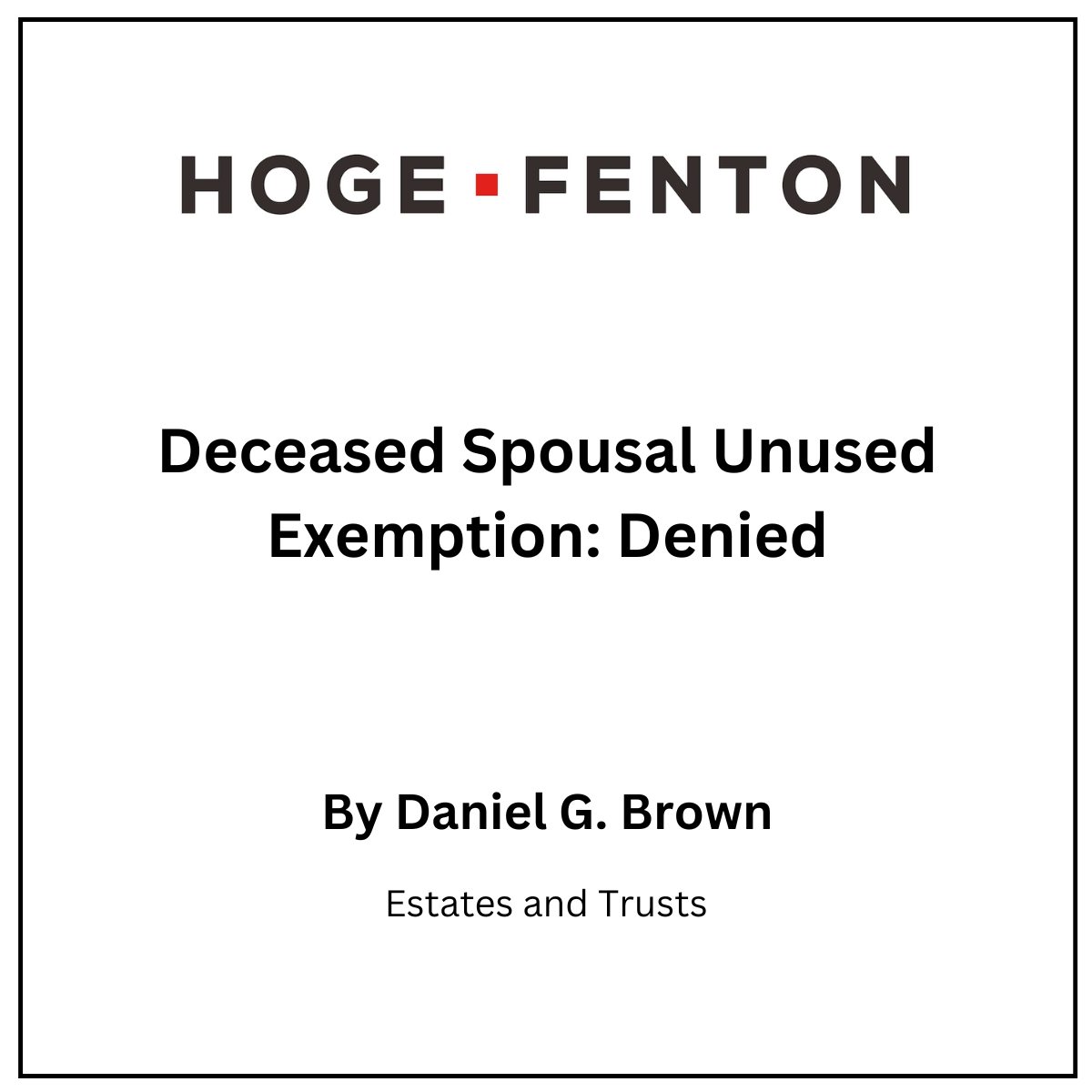Deceased Spousal Unused Exemption Denied
By Daniel G. Brown | 09.9.2025 | Estates and Trusts

In the 2025 case of Estate of Billy S. Rowland v. Commissioner, Mr. Rowland’s wife predeceased him approximately two years earlier. The estate tax return prepared for his wife was due nine months after her date of death. Under Revenue Procedure 2017 – 34, this deadline could be extended to the second anniversary of the death if a complete and properly prepared estate tax return was filed. The estate tax return was filed, but because it was deemed incomplete and improperly prepared, the estate did not qualify for Revenue Procedure 2017 – 34’s extended due date. Because of this, the tax return was considered not timely filed and the election to capture Ms. Rowland’s DSUE was not made. This resulted in the family being assessed additional estate tax on Mr. Rowland’s estate.
By way of background, a surviving spouse may elect to capture any unused estate tax exemption of the first spouse to die if certain criteria are met. This may be a valuable benefit. The election is accomplished by filing the US Estate Tax Return, IRS Form 706 in a timely manner after the first spouse dies. The unused estate tax exemption of the first spouse to die is called the Deceased Spousal Unused Exemption amount (“DSUE”).
For persons dying in 2025, the basic estate tax exemption amount is $13,990,000. Starting January 1, 2026, the exemption is increased to $15 million. This amount will be indexed for inflation going forward. The increase in the exemption to $15 million is a provision of what is popularly known as the One Big Beautiful Bill Act (OBBBA), which was signed into law by President Trump on July 4, 2025.
The filing threshold for a US Estate Tax Return IRS Form 706 (“706”) is the basic exemption amount. Hence, for persons dying in 2025 the threshold requirement to file the return is an estate with total assets valued at $13,990,000. However, an estate which is under the filing threshold may still wish to file a claim for the DSUE. The DSUE is held in available to be added to the surviving spouse’s exemption for use during lifetime against gift tax or at death against estate tax.
For example, let’s assume a married couple has a combined taxable estate of $20 million. Let’s further assume that it is community property, meaning that each spouse has an undivided one‑half interest in each asset. The first spouse dies in 2025. The estate planning documents (either will or trust) provide that all assets go from the first spouse to die to the surviving spouse outright. There will be no US estate tax due as a result of the first death because the transfer from the first spouse to the surviving spouse qualifies for the unlimited marital deduction for estate taxes. In this example, the first spouse to die has a unused exemption amount of $10 million. The filing threshold to file the 706 for a person dying in 2025 is $13,990,000. No 706 is required to be filed. However if the surviving spouse wishes to claim the DSUE, a 706 must be filed to make the election.
Now let’s assume that the surviving spouse dies in 2026 when the exemption amount is $15 million. Assuming there is no change in value of the assets, the surviving spouse has a taxable estate of $20 million. With the DSUE amount of $10 million when added to the surviving spouse’s $15 million, the total available exemption is $25 million. This would completely shelter the estate of the surviving spouse from estate tax. However, had the DSUE election not been made after the first death, only $15 million of the estate tax exemption would be available against a taxable estate of $20 million. That would result in an estate tax of $2 million ($20 million – $15 million times 40%).
The key to claiming the DSUE is to timely file a 706 in compliance with the regulations. This means that a complete and properly prepared return be filed by the due date as extended. In the Estate of Billy S. Rowland v. Commissioner, the estate did not make adequate disclosures of the values of assets to comply with the requirement to file a complete and properly prepared estate tax return.
The Deceased Spousal Unused Exemption Amount is very valuable to have after the 2nd spouse dies. It is important to prepare and file a full and accurate US Estate Tax Return, IRS Form 706 after the first spouse dies. This case illustrates what happens when the return filed after the first death was not adequate. If you would like to discuss further, please contact any member of the Hoge Fenton Trusts & Estates team.
Estate of Billy S. Rowland v. Commissioner, T.C. Memo 2025-76 (July 15, 2025)










